A recent history of the PA Supreme Court’s role in redistricting
Pennsylvania Supreme and Commonwealth Court justices and judges can impact redistricting in a number of ways and have done so in recent redistricting cycles.
For State House and Senate:
Article 2, § 17 of the PA Constitution describes a commission responsible for drawing PA House and Senate lines. The majority and minority leaders of both chambers are the first four members of the Legislative Reapportionment Commission. They are responsible for choosing a fifth member to serve as chair. “If the four members fail to select the fifth member within the time prescribed, a majority of the entire membership of the Supreme Court … shall appoint the chairman.”
In every decade since that provision was added, the four initial commission members have failed to agree on a chair, so the PA Supreme Court has selected that fifth person. In some decades, a partisan majority of the court has provided a partisan chair, allowing gerrymandered districts at the state house and senate level. In 2021, the court unanimously approved Chancellor Mark Nordenberg, nominated twice in the past by Republican members of the commission but not confirmed by a commission majority.
As Nordenberg made clear in his final report, under his leadership the commission implemented recommendations from good government groups, providing multiple public hearings, a public website, and significant response to public testimony.
Despite several appeals regarding specific district lines in the PA House map, the PA Supreme Court agreed unanimously that the final plan was in compliance with both the PA and US Constitutions.
For Congressional districts:
While the PA Constitution gives explicit instructions for drawing state legislative districts, it makes no mention of congressional redistricting. As a result, the power to draw congressional maps is currently vested in the General Assembly and handled as an act of legislation. A bill designating district lines is introduced in one chamber, must pass through both chambers, and then must be signed by the governor. A two-thirds vote in both chambers is necessary to override the governor’s veto.
There are no rules in PA or federal law regarding the drawing of congressional districts. According to legal precedent, districts must be as close in population as possible, and districts cannot be drawn to dilute racial vote share. In the 2019 case of Rucho v Common Cause, the US Supreme Court, by a 5-4 majority, ruled that questions of partisan gerrymandering cannot be determined in federal courts, leaving it to state courts to determine when “political” gerrymandering has gone too far.
Fair Districts PA began in 2016 partly in objection to PA’s congressional district map of 2011. That map contained one of the most notably gerrymandered districts of the decade, the notorious “Goofy Kicking Donald,” Congressional District 7, slicing through five counties in southeast PA. While that one district received ample press notice, voters in districts across the state found themselves ignored by legislators safely ensconced in their gerrymandered districts.
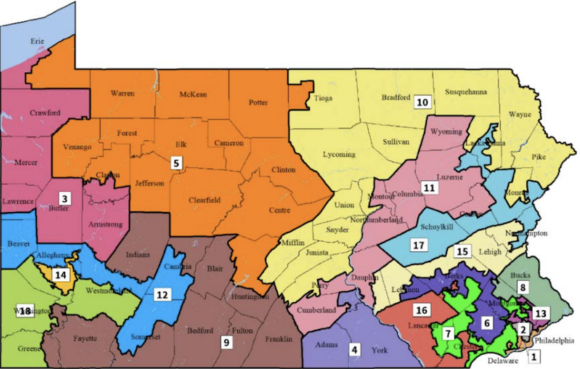
By multiple metrics the 2011 congressional map was the among most distorted in the nation, yielding a guaranteed outcome of 13 Republican to 5 Democratic seats, even when, as celebrated in the 2012 RedMAP Summary Report, “Pennsylvanians reelected a Democratic U.S. Senator by nearly nine points and reelected President Obama by more than five points.”
When civil rights are denied, the proper recourse is appeal to the courts. In 2017 the League of Women Voters of Pennsylvania, with plaintiffs from every congressional district, filed suit against the state of Pennsylvania. The case was filed in Commonwealth Court by the Public Interest Law Center and moved quickly by Kings Bench appeal to the PA Supreme Court. After testimony from legislators, plaintiffs, and expert witnesses, the court found the map violated the PA Constitution’s promise of free and equal elections and instructed the PA General Assembly to draw a new, lawful map. When legislative leaders refused to do so by the court-ordered deadline, the court appointed a special master, who provided a remedy map in time for preparations for the 2018 primary. (See Pennsylvania Redistricting Lawsuit or League of Women Voters v Commonwealth of Pennsylvania for more details.)
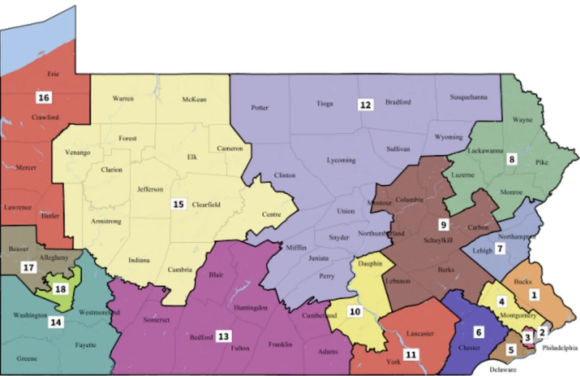
In 2018 and 2020, that remedy map provided a congressional delegation of 9 Republicans and 9 Democrats, much closer to the vote share of both elections.
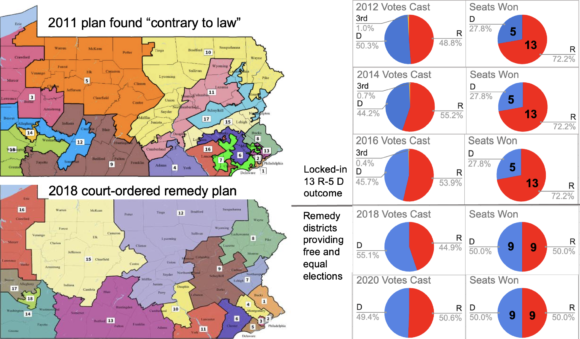
The PA appellate courts were again a recourse for voters during the 2021 redistricting process, when Governor Wolf refused to sign a redistricting bill with a strong Republican bias. The General Assembly adjourned for the year without providing an alternative. Citizen groups filed appeals, asking the court to intervene.
On January 14, 2022, Commonwealth Court issued an order setting a January 24 deadline for submission of a plan passed by both chambers and signed by the governor. When the deadline was not met, the PA Supreme Court intervened, inviting submission of district plans from interested parties and setting dates for hearings. On February 23, 2022, the Court issued an order adopting a final proposed plan and providing a modified 2022 primary election calendar
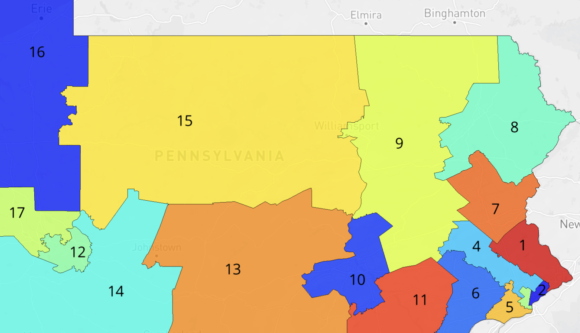
The 2022 plan adopted by the PA Supreme Court showed the least change from the 2018 remedy map, and was among the most balanced of submitted maps, according to an assessment by the non-partisan organization PlanScore. The chosen plan was heralded as one of the most responsive to voters in the country. Subsequent elections demonstrated this responsiveness. The 2022 election yielded a 9 Democrats - 8 Republican delegation, while the 2024 election yielded a delegation of 10 Republicans and 7 Democrats. While not every district is competitive, the map as a whole reflects the will of PA voters.
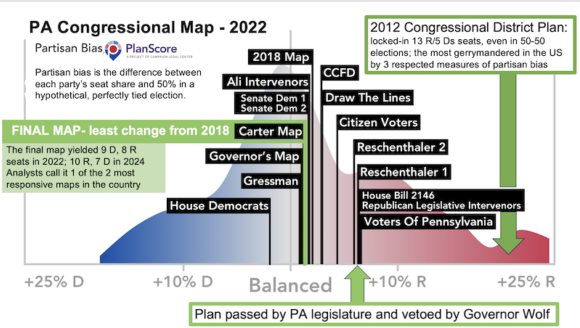
If the General Assembly wants to remove the courts from involvement in Pennsylvania congressional redistricting, there are several ways they could accomplish this: instruct party leaders to collaborate on choosing a non-partisan commission chair; draw lawful maps within the constitutional framework of free and equal elections and within the required electoral timeline; or pass a constitutional amendment creating an independent redistricting commission able to draw fair maps without court involvement, as proposed in House Bill 31 and Senate Bill 131.
Resources
- Pennsylvania Redistricting: The Legislative Guide to Redistricting in Pennsylvania provides a record of the 2021-2022 PA House and Senate redistricting, historic maps dating back to 1906, transcripts and recording from public hearings, and public comment and submitted maps.
- PA Courts: League of Women Voters v the Commonwealth of Pennsylvania
- Public Interest Law Center: Pennsylvania Redistricting Lawsuit
- Fair Districts PA: Opposition to House Bill 2207, January 7, 2022
- Fair Districts PA: District maps for the next decade, March 16, 2022 provides multiples links to assess 2022 maps and compare with maps from the previous decade
- The 4 reasons the Pa. Supreme Court picked the winning congressional map, Spotlight PA, March 10, 2022
- PlanScore: district plan assessments for PA historic using four accepted metrics dating back to 1972. (For more about Pennsylvania’s map before and after, 2018, see PlanScore, Scoring Pennsylvania, February 28, 2018)